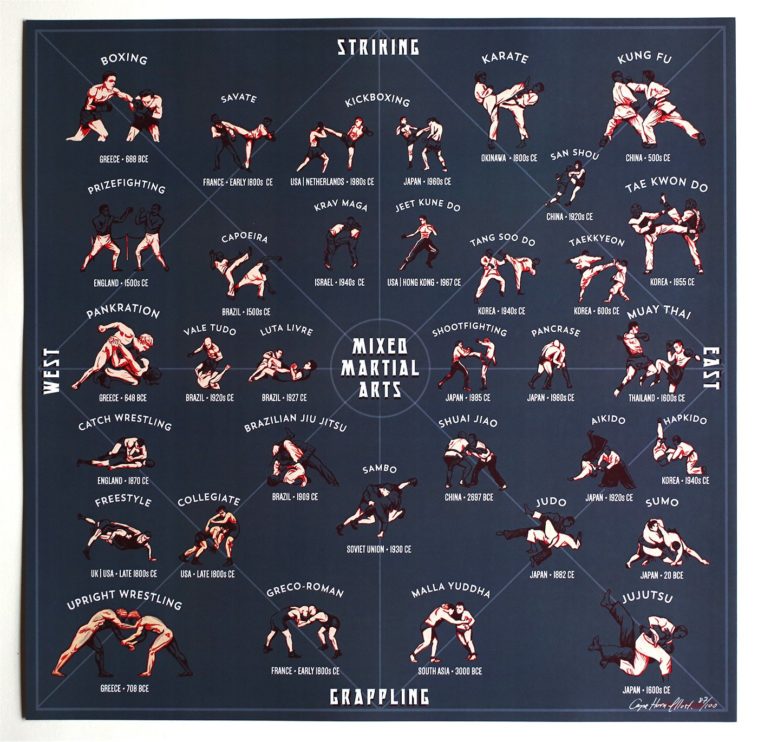Breaking Down Belt Levels In Taekwondo: What You Need To Know
Breaking Down Belt Levels In Taekwondo: What You Need To Know
Blog Article
Post Created By-Benson Vest
Did you know that there are a total of ten belt levels in Taekwondo? From the novice's white belt to the prominent black belt, each degree represents a milestone in your journey to mastery.
However what do these belt levels actually mean? How do you proceed via them?
In https://martial-arts-kids-classes78887.spintheblog.com/32850551/ways-to-preserve-your-drive-in-martial-arts-practice , we will break down the belt degrees in Taekwondo, discover their relevance, and discover what it takes to increase through the ranks.
So, if you wonder to understand the details of Taekwondo's belt system and what it suggests for your training, remain tuned.
The Objective of Belt Degrees
The function of belt levels in Taekwondo is to give a clear and structured progression system for you to track your development and skill degree. As you start your Taekwondo trip, you start with a white belt, representing your novice standing. With each belt promo, you obtain brand-new expertise, methods, and obligations.
The belt levels act as landmarks, mirroring your devotion, dedication, and growth in the fighting style. They give a sense of achievement and inspiration to keep pressing yourself to improve. In addition, belt levels assist instructors and peers examine your capabilities and supply appropriate assistance and training.
Belt Colors and Their Meanings
As you advance with the belt degrees in Taekwondo, each color stands for a specific meaning and represents your development in the fighting style.
The white belt, which is the beginning point for all newbies, represents purity and virtue.
As you move on to the yellow belt, it indicates the planet from which a plant sprouts and takes root.
https://rafaeldlsyf.qodsblog.com/32485969/discover-the-awesome-globe-of-brazilian-jiu-jitsu-join-a-beginner-s-trip-into-this-captivating-fighting-style-that-will-leave-you-wanting-more represents growth and the advancement of your abilities.
Heaven belt signifies the sky, where your capacity as a Taekwondo practitioner is infinite.
https://www.sixthtone.com/news/1006856 represents risk and caution, reminding you to use your abilities properly.
Lastly, the black belt represents proficiency and experience, indicating your journey towards coming to be a real Taekwondo master.
Each belt color holds its very own unique significance, mirroring your progress and devotion in this ancient fighting style.
Progressing Via the Belt Degrees
To progress with the belt degrees in Taekwondo, you need to continually show your abilities and commitment. Right here's what you require to know about advancing in this martial art:
1. ** Method Makes Perfect **: Regular training sessions are vital to enhance your method and master the required forms. Repeating refines your skills, permitting you to perform with precision and rate.
2. ** Pressing Your Restrictions **: Advancing via the belt degrees needs pushing yourself past your convenience zone. You'll be challenged physically and emotionally, but it's with these obstacles that you grow and improve.
3. ** Evaluating Your Understanding **: Belt examines review your understanding of Taekwondo concepts, including sparring, protection, and breaking strategies. These examinations ensure you have an extensive understanding of the art and prepare to proceed to the next degree.
Verdict
As you start your trip with the belt levels in Taekwondo, keep in mind that each shade holds a much deeper significance beyond its surface appearance.
Just like the vibrant hues of the belts, your progression represents growth, technique, and determination.
As you advance, each belt ends up being an icon of your dedication and mastery of the art.
Embrace the challenge, push your limits, and allow the symbolism of your belt levels motivate you to come to be the very best version of on your own both on and off the floor covering.
